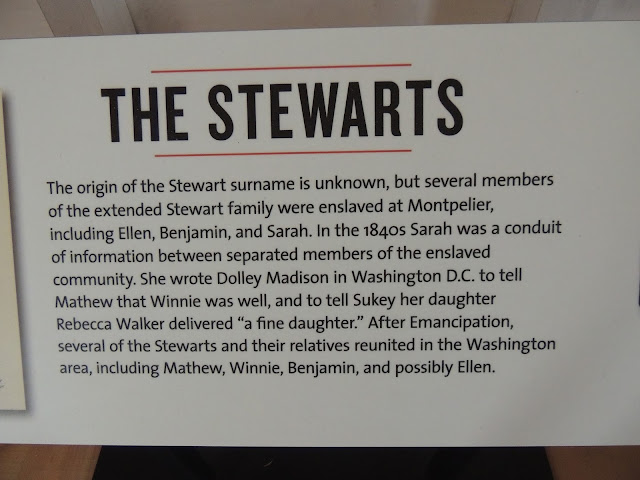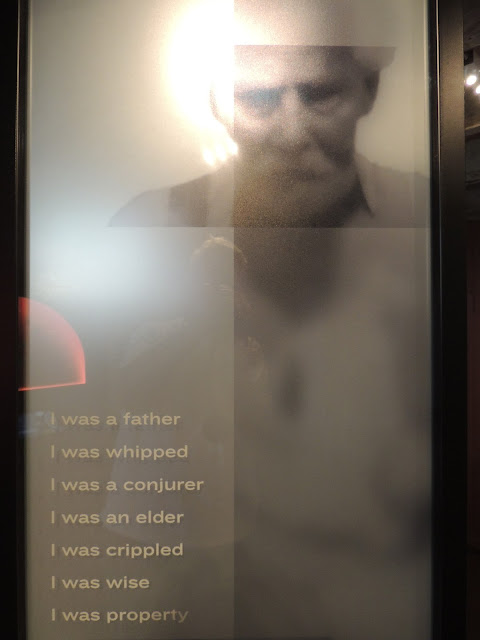Orange, VA
James Madison's Montpelier
Throughout this posting, there are excerpts from these sites. For more detail, check them out.
https://www.nps.gov/nr/travel/presidents/madison_montpelier.html http://www.history.com/topics/us-presidents/james-madison
https://www.whitehouse.gov/1600/presidents/jamesmadison
James Madison, 1751-1836
Wrote the draft of the Constitution and the Bill of Rights
The Secretary of State under Thomas Jefferson, 1801-1809
The Fourth President of the United States. 1809-1817
President during the War of 1812
Montpelier, James Madison's Virginia plantation home, was established by his grandfather in 1723. An estimated 100 slaves lived at Montpelier when Madison owned it. Today the estate, which covers some 2,600 acres, is open to the public.
This is the road leading up to the house. Up on the left is a race track that was added by the DuPonts when they owned the land.
A bit of interesting trivia.
Marion duPont Scott
The last of the duPonts to live at Montpelier, Marion duPont Scott, who's name is derived from her brief marriage to actor, Randolph Scott, embodied the modern notions of a strong, independent woman.
The eldest daughter of Annie and William duPont, Marion was born on May 3,1894. She always had a penchant for the outdoors, and preferred to spend her time riding horseback and exploring nearby forests. Remembered as somewhat of a tomboy, Marion was uninterested in the aristocratic propriety of the traditional English finishing school. On November 16, 1915, at the age of 21, Marion was the first woman to ride in an equestrian jumping competition, held at Madison Square Garden. Not only did she ride in the competition, but she took home the coveted blue ribbon. Marion's eschewing of traditional gender roles was at the forefront of bubbling social change in the early 20th century.
The eldest daughter of Annie and William duPont, Marion was born on May 3,1894. She always had a penchant for the outdoors, and preferred to spend her time riding horseback and exploring nearby forests. Remembered as somewhat of a tomboy, Marion was uninterested in the aristocratic propriety of the traditional English finishing school. On November 16, 1915, at the age of 21, Marion was the first woman to ride in an equestrian jumping competition, held at Madison Square Garden. Not only did she ride in the competition, but she took home the coveted blue ribbon. Marion's eschewing of traditional gender roles was at the forefront of bubbling social change in the early 20th century.

Horseback riding was more than a rebellious hobby for Marion, it was her calling. In fact the horse shows put on by her and her brother Willie eventually evolved into the Montpelier Hunt Races, which commenced in 1934. She raised champion horses at Montpelier, including Battleship, who became the first American-bred and American-owned horse to win the British Grand National Steeplechase in 1938. By 1976, Marion's stables had produced 50 stakes-winning horses.
They still hold the Hunt Races here, the 83rd running of the Montpelier Steeplechase will be held on November 4, 2017
As she aged, Marion recognized the beauty and the historical significance of Montpelier. She requested her heirs donate Montpelier to the National Trust for Historic Preservation, so that it could be restored to its 19th Century appearance, an homage to the life and times of President James Madison.

The property had been in the Madison family since 1723. When James was born, this house was not here. He lived in a "modest" frame house about a half mile away. His father built the beginnings of this house in the 1760s. The original two-story brick house consisted of two rooms on either side of a central hall.
Montpelier is the subject of an online lesson plan, Memories of Montpelier: Home of James and Dolley Madison. Sponsored by the National Park System, worth investigating.
https://www.nps.gov/nr/twhp/wwwlps/lessons/46montpelier/46montpelier.htm

James Madison was considered the "Father of the Constitution" and the author of the Bill of Rights.
The view from the house, the Blue Ridge Mountains in the distance. Absolutely beautiful!
Reconstructed slave quarters.
Love this view.
At some time in the past, the house was divided into two residences. Here is the remnant of a roof over the door.
The back of the house.
On either side of the main house, there is an entrance to a cellar. When we visited, there was an extraordinary exhibit called "The Mere Distinction of Colour"
This is a MUST READ
https://www.montpelier.org/learn/6-ways-that-understanding-slavery-will-change-how-you-understand-american-freedom
"We have seen the mere distinction of colour made in the most enlightened of time, a ground of the most oppressive dominion ever exercised by man over man." James Madison 1787.
I think he struggled with owning human beings and knowing they should have the same rights as he had. The economy of slavery is what afforded him the opportunity to amass his wealth. Slavery had become so ingrained, that he and many others could not see survival without it.
He promised his slaves their freedom upon his death, but nearing death, he reneged on his promise because Dolley said she couldn't survive without the help of the slaves.
At its height, slavery was a $3 billion-plus industry and a major engine of the US economy.
Just a few notes concerning some of our founding fathers.
George Washington... owned 318 people at his death. He inherited his first at age 11.
John Adams... never owned slaves, but many of his legal clients did, including John Hancock.
Thomas Jefferson... owned 600 people during his lifetime. He fathered at least 6 of those with his deceased wife's half sister, a slave by the name of Sally Hemmings. Think about that, he owned his sister-in-law and several of his own children.
James Madison... the author of the Bill of Rights, owned 100 men, women, and children and never freed a single one.
That is just a sampling of the hypocrisy that existed then and still exists today. Off my soap box now.
I guess I will never understand the logic.
Some of the attitudes of the 20th and 21st Centuries as well, just a change in name.
Cellar stairs were more like a ladder.
Article IV Section2 Clause 3 "the fugitive slave clause"
"No Person held to Service or Labour in one State, under the Laws thereof, escaping into another, shall, in Consequence of any Law or Regulation therein, be discharged from such Service or Labour, but shall be delivered up on Claim of the Party to whom such Service or Labour may be due."
We will return to finish this exhibit.
Our tour of the grounds begins here.
The slaves are buried in unmarked graves covered with periwinkle ground cover
Archaeology at Montpelier.
The South yard was probably where the domestic slaves lived. The reconstructed slave quarters contain exhibits and narratives by descendants of area slaves.
This mosaic was made from fragments of bricks excavated by archaeologists
A really unusual tree.
Archaeology students are working today.
"We tend to shy away from our past...we should face up to it, live with it, otherwise it will live with you, and distort you, for all your days." John Hope Franklin, Historian
The waiting room for the "Whites"
The "Colored" waiting room
























































































































































































No comments:
Post a Comment